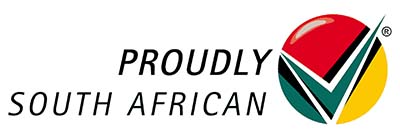Maintaining an accurate and up-to-date fixed asset register is essential for tracking valuable company assets.
However, this process can be complex, with several common challenges along the way.
Here’s an overview of obstacles that South African businesses face in asset management and practical solutions to ensure a reliable and efficient asset register.
Common Challenges In Fixed Asset Registers Explained
1. Data Accuracy and Completeness:
- Inaccurate or missing information: This can include details like asset descriptions, serial numbers, locations, custodians, purchase dates, and values. Missing or incorrect data hinders proper tracking, depreciation calculations, and financial reporting.
- Lack of regular updates: Assets move, are repaired, depreciate, and eventually get disposed of. Without regular updates, the register becomes outdated and unreliable.
- Manual data entry: Manual entry is prone to errors and time-consuming. Spreadsheets, while popular, aren’t designed for complex asset data management.
2. Physical Verification and Tracking:
- Difficulty locating assets: Assets can be spread across multiple locations, making physical verification challenging. Inaccurate location data or lack of asset tagging further complicates the process.
- Ghost assets: Assets that no longer exist but remain listed in the register are known as ghost assets. They inflate the asset value and distort financial reports.
- Asset movement and transfers: Tracking asset movement between locations or departments can be cumbersome without proper procedures and documentation.
3. Process and System Challenges:
- Lack of automation: Manual processes for tasks like depreciation calculations, maintenance scheduling, and disposal are inefficient and error-prone.
- Integration issues: Different systems for accounting, inventory, and asset management may not be integrated, leading to data silos and inconsistencies.
- User adoption and training: Employees responsible for asset data entry and management may lack proper training or understanding of the importance of accurate records.
Solutions
- Implementing robust asset management software: This can automate data entry, track assets in real-time, and generate reports.
- Regular data verification and updates: Physical verification and system audits are essential to ensure data accuracy.
- Standardized processes and procedures: Clear guidelines for asset acquisition, movement, and disposal are crucial.
- Investing in user training: Employees should understand the importance of accurate asset records and how to maintain them.
- Regular system reviews and updates: Keeping software and processes up-to-date ensures optimal asset management.
By addressing these challenges, organizations can maintain accurate and reliable fixed asset registers, leading to better financial reporting, improved asset utilization, and cost savings.
Conclusion
So there you have it, fellow sailors of the financial seas!
Navigating the challenges of fixed asset registers in South Africa is no easy feat, but with accurate data, regular audits, and compliance as your anchor, your financial ship will weather any storm.
Now, set sail towards success, and may your fixed asset registers be as sturdy as the South African coastline.









1 thought on “Overcoming Common Challenges In Fixed Asset Registers”
Good day. Regarding the use of a Fixed Asset Register, do you have a solution whereby the same asset register can be used to track accounting depreciation AND taxation wear and year, or the ability to operate a “mirror” FAR that is synced in tandem – i.e. a single FAR, but serving two functions?